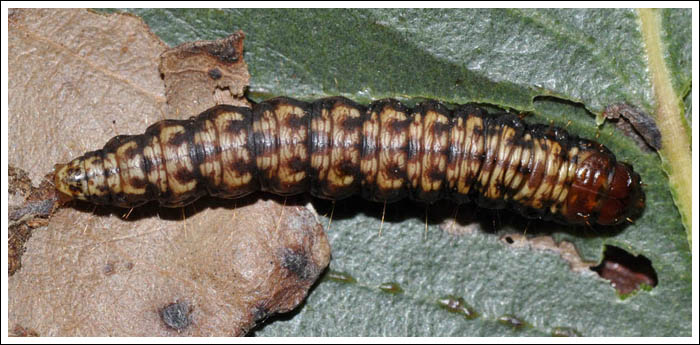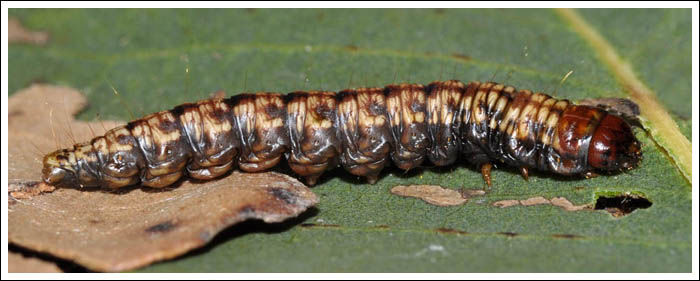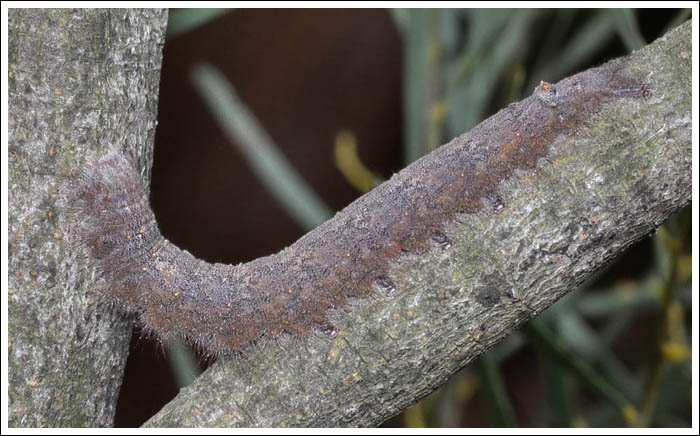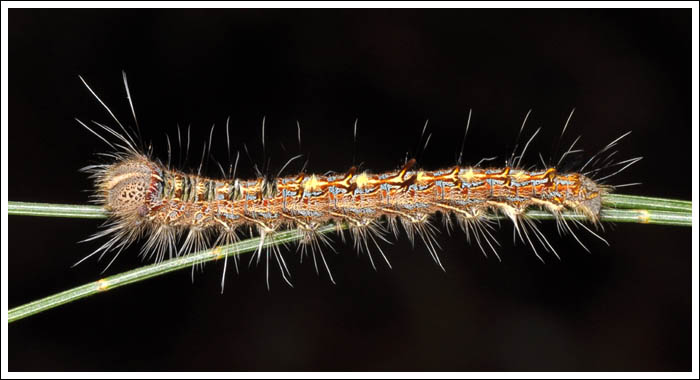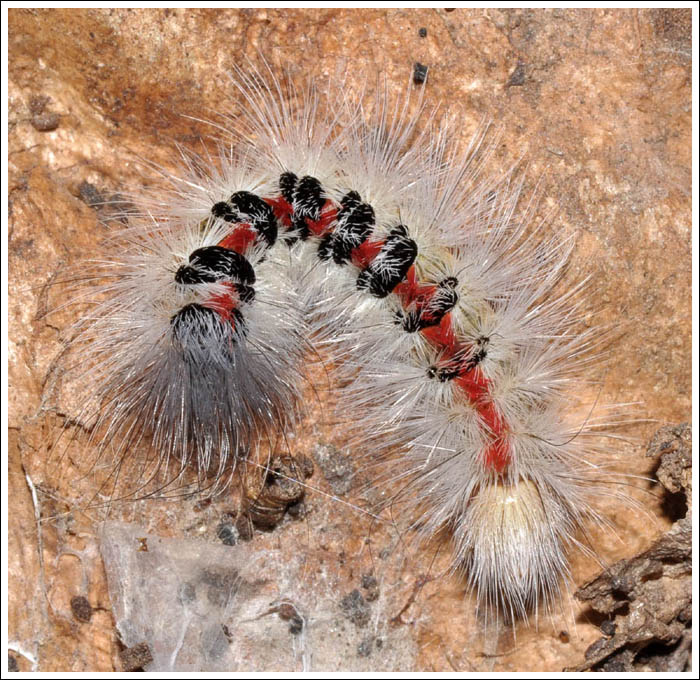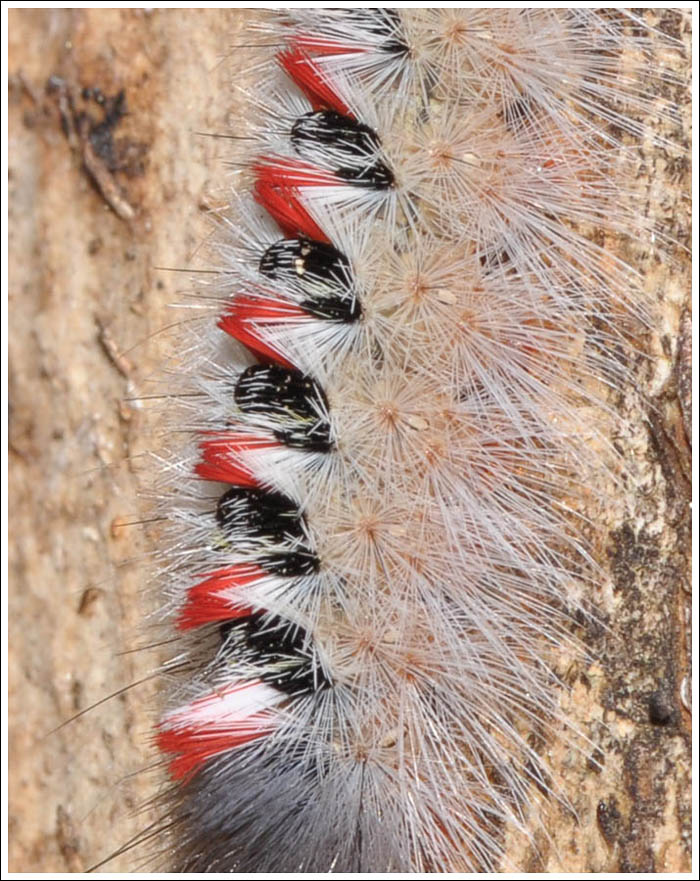Moth surveying began at home in 2008, and until 2018 there was no indication that Chelepteryx collesi inhabited the garden. In January of that year a larva was found on the trunk of an Angophora costata, and in May an adult male moth came to the light. Then in December another larva was found on the trunk of a Gippsland Red Gum, Eucalyptus tereticornis sub species mediana. In December 2020 a larva was found on the trunk of a Sydney Grey Gum, Eucalyptus punctata, and in November this year larvae are on the trunks of a Red Gum, and a Yellow Gum, Eucalyptus leucoxylon, so it appears that they are not fussy about the host tree species. All individuals have shown that they have a specific daytime camping spot low on the trunk from where they climb up into the canopy at night to feed. Sheltering low on the trunk is obviously a defensive strategy, avoiding higher elevations where birds are constantly working through looking for food.
This is the larva on the RedGum, it has recently shed its skin, click to enlarge.
And on the Yellow Gum.



